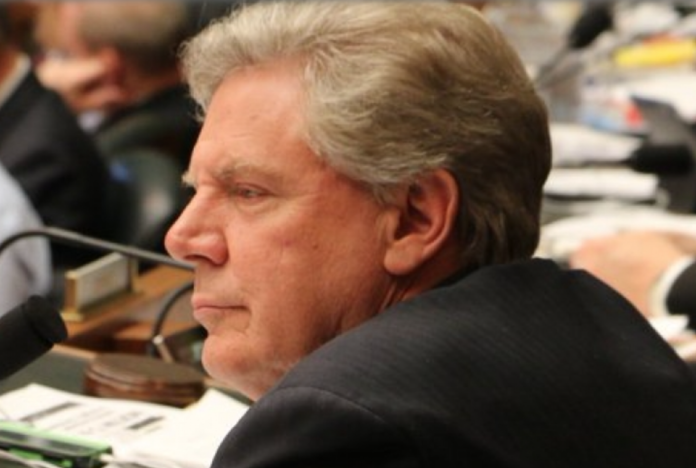Energy and Commerce Committee Chairman Frank Pallone Jr. (D-NJ), Environment and Climate Change Subcommittee Chairman Paul Tonko (D-NY) and Energy Subcommittee Chairman Bobby L. Rush (D-IL) have introduced the Climate Leadership and Environmental Action for our Nation’s (CLEAN) Future Act – ambitious new climate legislation that ensures the U.S. acts aggressively to tackle the climate crisis this decade and achieve net-zero greenhouse gas (GHG) pollution.
The CLEAN Future Act would achieve net-zero greenhouse gas pollution no later than 2050, with an interim target of reducing pollution by 50% from 2005 levels no later than 2030. The targets come from the United Nations Intergovernmental Panel on Climate Change, which has said we must cut carbon pollution to net-zero by 2050 to avoid the most catastrophic consequences of climate change. The bill presents both sector-specific and economy-wide solutions to meet those targets, offering a sweeping set of policy proposals that will put the U.S. on the path to a cleaner and more economically prosperous future.
“The climate crisis is one of the greatest challenges of our lifetime, but it also presents one of the greatest opportunities to empower U.S. workers with new, good-paying jobs and return our economy to a position of strength after a long, dark year of historic job losses and pain,” says Pallone. “The CLEAN Future Act promises that we will not stand idly by as the rest of the world transitions to clean economies and our workers get left behind and that we will not watch from the sidelines as the climate crisis wreaks havoc on health and homes. This legislation will create millions of homegrown jobs in a climate-resilient economy, ensuring our workers and businesses can compete in the 21st-century transition to clean technology that’s already happening.”
The CLEAN Future Act proposes ambitious new policies aimed at dramatically cutting greenhouse gas pollution in areas within the committee’s jurisdiction:
The Power Sector
The CLEAN Future Act includes a nationwide Clean Electricity Standard (CES) requiring all retail electricity suppliers to obtain 100% clean electricity by 2035 – in line with President Joe Biden’s call to action for the power sector. The CES mandates that all retail electricity suppliers provide an increasing supply of clean electricity to consumers starting in 2023, rising to 80% clean by 2030 and then 100% clean by 2035. The CES further requires that workers be paid prevailing wages for the construction of participating new electricity generation and that owners and operators of all participating qualifying generation not interfere with the right to organize and bargain. The bill also invests heavily in clean energy, distributed energy resources, grid infrastructure and microgrids – all of which build resiliency and are crucial to reducing carbon pollution. In addition, it empowers the federal government to expedite the responsible buildout of our electricity transmission system to achieve clean energy goals.
State Climate Plans
The CLEAN Future Act empowers states to complete the transition to a net-zero economy based on the existing federalism model in the Clean Air Act. States have the flexibility to develop plans to meet the 2050 and interim targets based on their own policy preferences, priorities and circumstances. Each state must submit a climate plan to EPA for its review and approval. To ensure that states have ample guidance and expertise at their disposal, the bill directs EPA to develop a set of model greenhouse gas control strategies which states can choose to incorporate into their plans. The bill authorizes $200 million to help states prepare their plans.
Worker and Community Transition
The CLEAN Future Act establishes an interagency framework to ensure every worker and community has federal-level support and resources during the nation’s transition to net-zero climate pollution. It creates an Office of Energy and Economic Transition in the Executive Office of the President, responsible for managing a task force and stakeholder advisory committee to coordinate programs and activities that support impacted workers and communities. As part of the bill’s commitment to leave no neighborhood behind during the energy transition, it likewise creates new programs to support dislocated workers and provide financial assistance to local governments – including by replacing lost revenue due to the closure of a major employer. This assistance, coupled with the infrastructure investments in the CLEAN Future Act, will support economic development and diversification for all affected communities.
The CLEAN Future Act also features a suite of complementary policies, including proposals to remove barriers to clean energy and reduce super pollutants like methane. The legislation is the result of 27 hearings in the Energy and Commerce Committee on the climate crisis over the last two years. Its introduction marks the beginning of the legislative process; hearings on the CLEAN Future Act will continue in the months ahead.
To access the full text of the CLEAN Future Act, click here. A section-by-section of the bill can be found, here.
Photo: Frank Pallone Jr.




